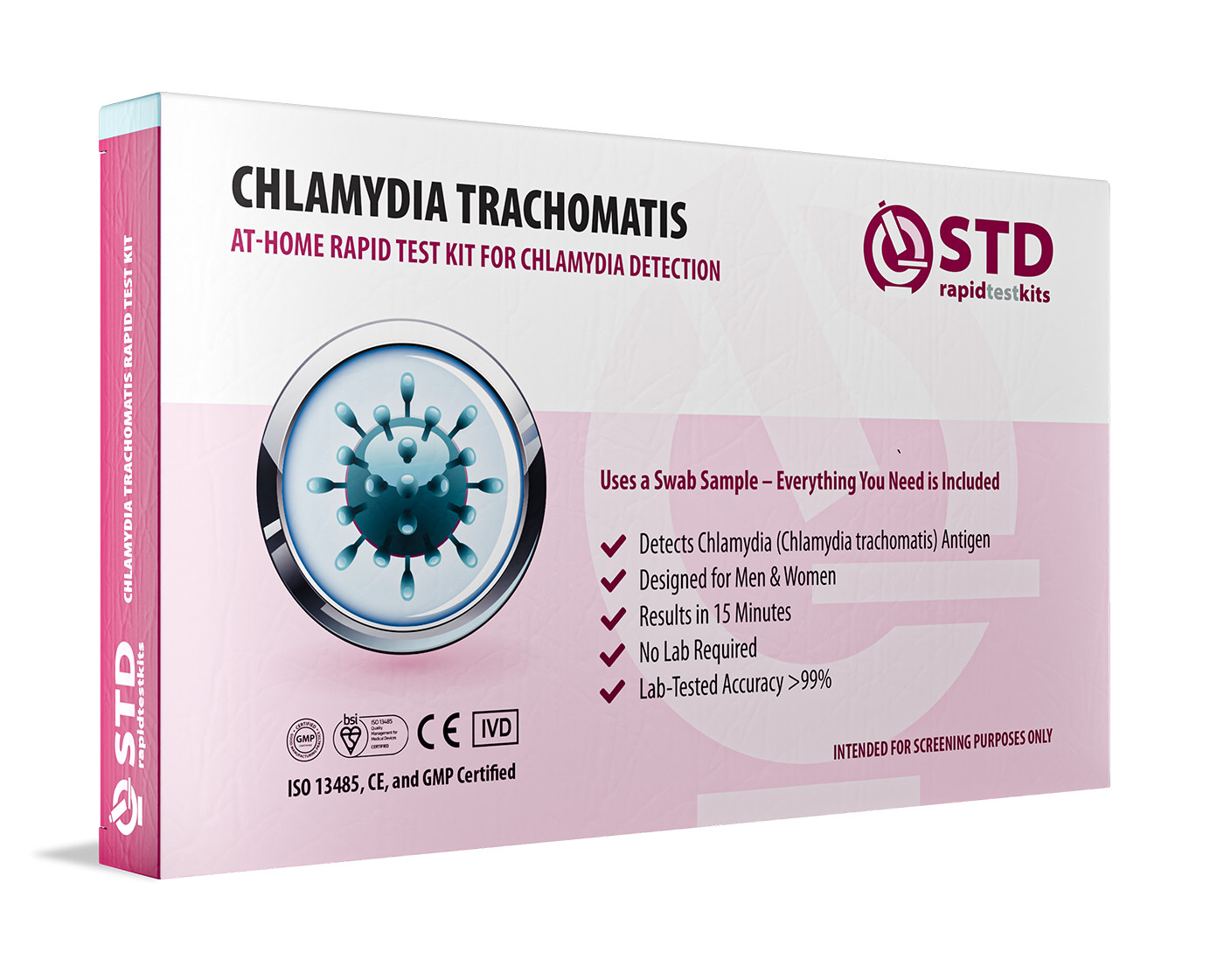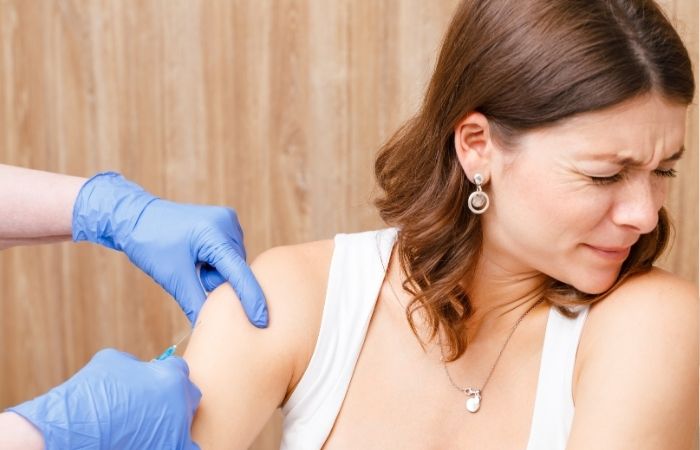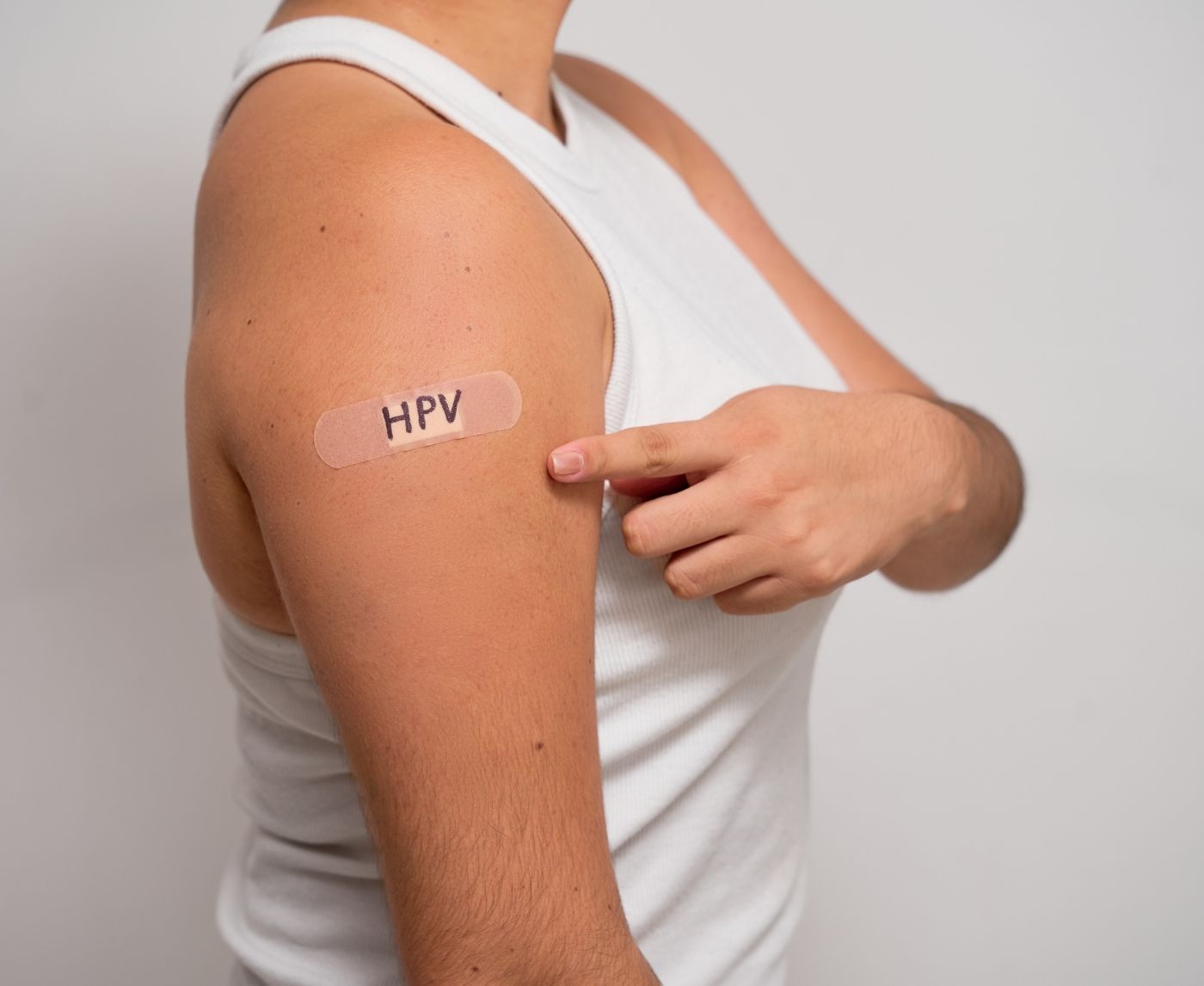Quick Answer: There is no approved vaccine yet for herpes, chlamydia, or HIV. Research is active, but trials have struggled due to complex virus behavior, funding issues, and public stigma. HPV and Hepatitis B are the only STI vaccines currently available.
This Isn’t Just a Science Problem, It’s a Stigma One
Let’s be real: if herpes affected everyone equally, and without shame, there might already be a vaccine. Instead, vaccine development for STIs has long been entangled in cultural bias, sexual taboos, and a lack of urgency from policymakers. Researchers have warned for years that STIs are among the most neglected infectious diseases in modern vaccine development. And while the global medical community rushed to develop COVID-19 vaccines in less than a year, some of the most common STIs in the world, like HSV-2 and chlamydia, remain without approved preventive shots.
The science is tough, yes. But so is getting the world to care.
Take herpes. More than half the global population has HSV-1 or HSV-2. Most don’t know it. It can be painful, persistent, and for some, psychologically devastating. But it’s often dismissed as “just a skin issue” or “not dangerous,” despite evidence that it increases risk of HIV and causes severe neonatal infections. When a disease is simultaneously common and shameful, it becomes politically invisible. That’s exactly where herpes has been stuck.

People are also looking for: The Hidden Dangers of Untreated Chlamydia
“Can’t They Just Use mRNA Like They Did for COVID?”
That’s the next question Mara asked. And honestly? It’s a smart one. The short answer is: they're trying.
Moderna has an experimental herpes vaccine in development, mRNA-1608, targeting HSV-2. It uses the same revolutionary technology as their COVID-19 vaccine. But STIs are notoriously sneaky. The immune system has a hard time getting to herpes viruses because they hide in nerve cells. That makes it hard to make a vaccine that not only stops people from getting sick, but also stops the virus from coming back. It's not just about antibodies; it's also about immune memory, viral latency, and how the body responds to tissue over time.
Early mRNA vaccines for herpes have shown promise in mouse models and preclinical studies. But trials in humans take time, funding, and trial participants willing to navigate deeply personal health issues in public. These human hurdles, bureaucratic, social, and emotional, slow everything down.
Another major player, Rational Vaccines, is developing a live-attenuated herpes vaccine called Theravax, while Sanofi Pasteur and BlueWillow Biologics are exploring trivalent and nasal delivery models. But none have crossed the finish line.
What About Chlamydia? Isn’t That “Easier” to Cure?
Here’s the twist: chlamydia is treatable, with antibiotics. But that doesn’t mean it’s harmless. Often asymptomatic, chlamydia can silently damage reproductive organs, leading to pelvic inflammatory disease (PID), ectopic pregnancies, and infertility, especially in people assigned female at birth. And that’s precisely why researchers want a vaccine.
In March 2025, Sanofi received Fast Track designation from the FDA for an mRNA-based chlamydia vaccine. It’s now entering a Phase I/II trial. This is huge. It means the government sees the need, and the potential. But again, this isn’t just a science race. It’s a race against silence. People don’t talk about chlamydia the way they talk about HPV, even though it’s just as common, and often much harder to detect.
There’s no celebrity campaign. No school mandates. No billboards reminding you that you could have it and not know. And because it’s curable with antibiotics, there’s less pharmaceutical incentive to invest in long-term prevention. Prevention doesn’t pay like treatment does.
Check Your STD Status in Minutes
Test at Home with RemediumChlamydia Test Kit

 For Men & Women
For Men & Women Results in Minutes
Results in Minutes No Lab Needed
No Lab Needed Private & Discreet
Private & DiscreetOrder Now $33.99 $49.00
The HIV Vaccine That Still Isn’t Here
We’re more than 40 years into the HIV pandemic, and there’s still no approved vaccine. That doesn’t mean researchers haven’t tried. More than a dozen major clinical trials have launched, and most have failed. The most recent, HVTN 702, was halted in 2020 when it showed no protection. Others fizzled out in earlier phases due to poor immune response or low efficacy. So what makes HIV so much harder to prevent?
In short: the virus mutates rapidly, hides inside immune cells, and builds decoys to confuse the body’s defenses. Creating a single vaccine to block all HIV strains has been the holy grail of infectious disease research, but so far, it’s remained elusive.
That said, 2025 has brought a flicker of real hope. Two promising new strategies have entered early-stage human testing: mRNA-based vaccines and germline-targeting immunogens. These sound like science fiction, but they’re very real.
Moderna’s latest HIV vaccine candidate uses an mRNA platform to teach the body to recognize the envelope proteins HIV uses to infect cells. Meanwhile, a team at Scripps and IAVI is working on a “germline” approach, essentially training the body’s B cells to evolve into antibody-making factories that can neutralize HIV’s many forms. Early data published in LiveScience and Reuters showed strong immune responses with no major safety concerns. That’s more than we’ve had in years.
Still, these trials are small, and it will take years to move from “promising” to “proven.” And now, there’s a new political problem.
What Happens When the Government Pulls Funding?
In August 2025, the U.S. Department of Health and Human Services, now led by Robert F. Kennedy Jr., slashed $500 million in federal contracts related to mRNA vaccine development. The goal was to "reevaluate emerging technologies." What does it mean in the real world? There are delays and uncertainty in many projects that deal with infectious diseases, such as those that deal with HIV and cancer.
Researchers are worried. Not just about clinical timelines, but about public trust. mRNA has become a political lightning rod, despite being one of the most efficient, adaptable vaccine platforms we’ve ever had. With HIV infections still rising in parts of the U.S. and globally, the idea that funding cuts could derail the most promising vaccines we’ve seen in decades is more than frustrating, it’s dangerous.
Still, trials are continuing in Canada, Europe, and parts of Africa, where organizations like the International AIDS Vaccine Initiative are leading the charge. But speed matters. Lives are on the line.

People are also reading: The Important Role Vaccines Play in Preventing STDs
Why Did HPV Get a Vaccine Before Herpes?
This question comes up a lot, especially from people newly diagnosed with herpes. The answer isn’t just about science. It’s about stigma, visibility, and political will.
HPV causes cancer. Cervical, anal, throat, these are serious, visible, high-profile health outcomes. And HPV was already tied into public health campaigns, Pap smear education, and cancer prevention narratives. That made it easier to frame HPV as a public health priority, not a "sex issue." It also helped that big pharma saw profit in a cancer vaccine. Gardasil was born.
Herpes, by contrast, doesn't cause cancer. It doesn’t usually kill. It’s episodic, invisible to the public, and often written off as a “nuisance.” So it gets swept under the rug. Never mind that the emotional toll can be massive, that outbreaks can be excruciating, and that HSV increases HIV risk by 2-3x. Without the same PR engine or urgency, herpes has been left behind.
But what if we reframed it? What if we treated herpes like a reproductive health issue, a mental health issue, a systemic equity issue? What if we taught people that 1 in 6 Americans has genital herpes, and most don’t even know it?
Vaccines don’t just need labs. They need lobbying. They need people who care enough to make noise.
“I Was Itching. I Thought It Was a Yeast Infection.”
That’s what Leila, 34, shared on a Reddit thread about misdiagnosed STIs. She had no idea she had genital herpes until a partner’s disclosure pushed her to test. The signs were vague: a little itchiness, maybe some irritation. “I didn’t even see a sore,” she wrote. “I figured it was underwear friction or a new soap.”
This is the problem with waiting for a vaccine to save us, STI symptoms often don’t scream. They whisper. Or they hide completely. Chlamydia can do damage silently for years. Herpes can be present without obvious sores. HIV may have flu-like symptoms early on and then nothing for months or even years.
Most people who search "Is there a vaccine for herpes?" aren’t just curious, they’re trying to make sense of something happening in their body. Maybe you’re one of them. Maybe you noticed a bump. Maybe something itches but doesn’t burn. Maybe your last partner texted you, and now your stomach’s in knots. That uncertainty, between awareness and diagnosis, is exactly where prevention should live. And yet, we’re told to wait for a shot that might be a decade away.
Check Your STD Status in Minutes
Test at Home with Remedium8-in-1 STD Test Kit

 For Men & Women
For Men & Women Results in Minutes
Results in Minutes No Lab Needed
No Lab Needed Private & Discreet
Private & DiscreetOrder Now $149.00 $392.00
For all 8 tests
Here’s What You Can Do While You Wait
If the vaccine doesn’t exist yet, you’re not powerless. Not even close.
First, get tested. Not just when you’re scared. Not just when you have a new partner. Regular testing is one of the most radical things you can do for your body, your community, and your peace of mind. You can order a Combo STD Home Test Kit discreetly and do it yourself, no waiting rooms, no awkward silences.
Second, understand your options. HIV doesn’t have a vaccine yet, but it has PrEP, a daily pill or injection that reduces risk by up to 99%. HPV and hepatitis B vaccines are available now and recommended for anyone who hasn’t received them, regardless of age or gender identity. Get those if you haven’t.
Third, talk about it. Tell your friends that there’s no herpes vaccine. Share what you learned. Text someone after a scare and say, “I found this out, have you ever tested?” Every time you normalize that conversation, you make it easier for someone else to protect themselves too.
Lastly, protect your pleasure. This isn’t about fear. It’s about knowing what’s out there so you can enjoy your sex life with less anxiety. Barriers like condoms and dental dams aren’t perfect, but they help. And if you’re someone who already has an STI, know this: you are not dirty, broken, or undeserving of intimacy. You’re part of a very big, very human club.
Global Health Doesn’t Prioritize What People Won’t Talk About
STIs don’t just live in bodies, they live in budgets, headlines, and silence. Right now, most of the world’s public health systems fund HPV and hepatitis B vaccines. These are critical, lifesaving interventions. But what about the others? Why is it that chlamydia, the most commonly reported bacterial STI in the U.S., still has no preventive vaccine on shelves? Why does herpes get left out of sexual education slides even though it affects more people than gonorrhea and syphilis combined?
The answers are frustrating but clear: chronic STIs are invisible. They don’t spike fevers. They don’t overwhelm ERs. They exist quietly, causing pelvic pain, emotional trauma, complications in childbirth, and slow erosion of trust in our own bodies. That invisibility means fewer headlines, which means fewer research dollars. According to peer-reviewed NIH data, STI vaccine research receives a fraction of the funding poured into other infectious diseases, even though the public health impact is massive.
And pharmaceutical companies? They calculate return on investment. A one-time vaccine doesn’t generate as much recurring revenue as lifelong treatments. So they hedge. They wait. They bet on products that pay out more predictably. It’s not a conspiracy, it’s a market failure. But when markets decide what gets cured, people get left behind.

People are also reading: Understanding Mycoplasma Genitalium: The Emerging STD
Why You Deserve More Than “Just Wait”
If you’re here, reading this, odds are you’re not just wondering about vaccines in the abstract. You want to know if something that’s affecting your sex life, your health, your relationship, or your peace of mind, is ever going to get easier. You want to know if someone is fighting for you behind closed lab doors. You want to know if it’s even worth hoping.
It is. Not just because vaccines are progressing (they are), but because the conversation is shifting. More people are calling out STI stigma. More public figures are disclosing their diagnoses. More studies are surfacing that show how genital herpes and chlamydia intersect with gender inequality, queer health, reproductive rights, and mental health. The more we talk, the harder it is to pretend these diseases don’t matter.
But we also have to stop waiting for a savior in a syringe. We need testing that’s faster. Education that’s real. Partners who respect disclosure. And sexual health systems that protect people who aren’t straight, rich, or white. A vaccine won’t fix stigma. That takes all of us.
If you’re scared, that’s okay. If you’re confused, that’s valid. If you’re angry, that might be the clearest sign that you care.
FAQs
1. Is there really no herpes vaccine?
Unfortunately, no, not yet. It shocks a lot of people, especially given how common herpes is. There are experimental vaccines in development, including one from Moderna using mRNA tech, but nothing has cleared all the clinical hurdles. So for now, prevention and awareness matter more than ever.
2. Why hasn’t chlamydia been “solved” by now?
Chlamydia’s tricky because it’s curable but sneaky. Most people have zero symptoms. That makes it easy to pass along without knowing. The good news? A vaccine is finally in early trials thanks to Sanofi, but it’s still a few years out, if it clears every phase. Until then, regular testing is your best defense.
3. Okay, but HIV? We’ve had 40 years to figure that out, what gives?
Fair question. HIV mutates constantly, hides in the body’s immune cells, and makes designing a one-size-fits-all vaccine nearly impossible. Some new trials, especially using mRNA and a method called germline targeting, show promise. But for now, PrEP is the closest thing we have to a shield. And it works. Like, 99% effective when taken correctly.
4. Why did HPV get a vaccine and herpes didn’t?
It comes down to public perception and pressure. HPV causes cancer, cervical, anal, throat, so it got taken seriously. Herpes? It’s stigmatized and often minimized. The medical system doesn’t move fast when shame gets in the way of urgency. It’s unfair. And you’re right to be frustrated.
5. Can I travel to another country to get a herpes vaccine?
You might find unapproved options like Vitaherpavac in Russia, but they’re not FDA-cleared and haven’t passed rigorous international testing. Think of it like bootleg medicine, it may be real, it may not be safe, and there's no guarantee of protection.
6. Is it possible herpes will never be curable?
Possible, yes, but not definite. Herpes hides in nerve clusters where the immune system can’t easily touch it. That makes it incredibly hard to wipe out completely. But scientists are working on it, especially with gene-editing and vaccine combos. It’s just a marathon, not a sprint.
7. What should I do if I’m scared but don’t have symptoms?
That’s a perfect time to test. You don’t need symptoms to justify care. Anxiety after a hookup? New partner? Something just feels off? Get a test and get clarity. At-home kits make it easier than ever to find out discreetly, no appointments, no awkward conversations.
8. Is it true most people with herpes don’t know they have it?
Yep. Around 80% of people with HSV-2 have no idea they carry it. Why? Because symptoms can be super mild, an itch, a skin split, something easily dismissed as irritation. That’s why testing (even when things seem “normal”) is so important.
9. Can I really test myself at home?
Absolutely. Modern rapid kits let you test for herpes, chlamydia, gonorrhea, HIV, and more without setting foot in a clinic. Kits like the Combo STD Home Test Kit ship discreetly and give you answers fast. No lab coat needed.
10. Will any of these vaccines, once approved, completely block infection?
Probably not 100%. But neither does the flu shot. The goal is to prevent the worst outcomes, reduce spread, and give your immune system the tools to fight back. Even partial protection can save lives, relationships, and mental health.
You Deserve More Than Silence and Stigma
There may not be vaccines yet for herpes, chlamydia, or HIV, but that doesn’t mean you’re unprotected. Testing is prevention. Knowledge is prevention. Honesty is prevention. And your body, whatever it's been through, is still worthy of care, sex, and trust.
Don't wait for someone else to tell you what’s worth fighting for. Your health is already worth it.
This at-home combo test kit checks for the most common STDs discreetly and quickly, so you can stop guessing and start knowing.
Sources
1. WHO – Herpes Simplex Virus (HSV)
2. FDA Grants Fast Track to Sanofi’s Chlamydia Vaccine
3. Experimental HIV Vaccines Show Promise
4. Reuters – HIV Vaccine Shows Early Promise










